Top Gun (1986) (PG) ★★
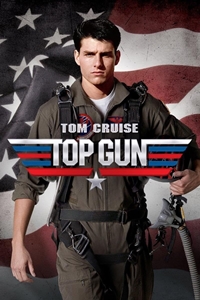 Top Gun is an '80s testosterone fix - a celebration of machismo and a recruiting film for the U.S. Navy. Typical of Jerry Bruckheimer/Don Simpson at their peak, the movie embraces masculine tropes to create a patchwork narrative that is almost laughably bad but whose fetishization of high-tech hardware makes the cheesiness of the story seem irrelevant. This is the male equivalent of a Lifetime made-for-TV tearjerker and the passage of the years has greatly diminished it. The aerial stunts and dogfights, which were modestly entertaining in the mid-1980s, come across as borderline-incoherent.
Top Gun is an '80s testosterone fix - a celebration of machismo and a recruiting film for the U.S. Navy. Typical of Jerry Bruckheimer/Don Simpson at their peak, the movie embraces masculine tropes to create a patchwork narrative that is almost laughably bad but whose fetishization of high-tech hardware makes the cheesiness of the story seem irrelevant. This is the male equivalent of a Lifetime made-for-TV tearjerker and the passage of the years has greatly diminished it. The aerial stunts and dogfights, which were modestly entertaining in the mid-1980s, come across as borderline-incoherent.
Top Gun is all about Tom Cruise. The movie traded on his popularity while at the same time enhancing it - the perfect feedback loop. Prior to this film, Cruise was fast becoming a hot commodity as a result of Risky Business and All the Right Moves. Top Gun would elevate him to the next level, starting a decade of high-profile box office blockbusters. The film also ginned up the careers of producers Jerry Bruckheimer and Don Simpson, whose previous successes with Flashdance and Beverly Hills Cop were appetizers for what was to come beginning here. Top Gun was a huge success, not only finishing #1 at the box office for 1986 but beating out the #2 title (Crocodile Dundee) by more than $50M. (At a time when $50M was a huge number.)
At the center of Top Gun is Pete "Maverick" Mitchell (Cruise), a classic Hollywood hotshot who's nearly as good as he thinks he is but learns a lesson the hard way. Mitchell and his partner, Nick "Goose" Bradshaw (Anthony Edwards), are stationed aboard the USS Enterprise aircraft carrier when they are selected to attend Top Gun (the colloquial name for the Naval Fighter Weapons School). At Top Gun, Maverick finds himself in a not-so-friendly rivalry with Tom "Iceman" Kazansky (Val Kilmer) for the Top Gun Trophy. They are put through their measures by instructors Rick "Jester" Heatherly (Michael Ironside), who admires Maverick's flying skills but disapproves of his recklessness, and Mike "Viper" Metcalf (Tom Skerritt), who sees something of himself in the younger man. Meanwhile, Maverick tumbles into a relationship with Charlie Blackwood (Kelly McGillis), a civilian instructor, who initially rebuffs his advances until eventually having her breath taken away. This is all prelude to a training exercise when things go very wrong and Maverick is left bereft and with his confidence shaken.
The movie is a by-the-numbers macho/guy bonding affair with lots of areal footage and a love story thrown in to highlight Cruise's softer side. There's more than a little homoerotic material - whole essays could be (and probably were) written about the shirtless beach volleyball game whose entire purpose is to show off buff, sweaty men. The term "beefcake" definitely applies, although one might query the target audience for this sequence. There are no real characters - even those with the most screen time are walking clichés. When the pivotal tragedy occurs, it has zero impact on the viewer.
Ultimately, Top Gun boasts two things: Tom Cruise and authenticity. At the time of filming, CGI was still in its infancy so no consideration was given by sophomore director Tony Scott of using computers to animate the aerial sequences. Star Wars-type effects, involving miniatures, were discussed but quickly dismissed because of concerns they wouldn't look realistic. As a result, all of the flying sequences feature actual planes doing real stunts (a pilot died as a result of one of these). It can be argued whether the benefits of this approach outweigh the deficiencies - the limitations (especially regarding camera location and shot selection) can make it difficult to determine the relative placement of the planes in some cases. Such quibbles about the technical aspects aside, there's no denying their vast superiority to the flesh-and-blood ones, in which underdeveloped characters utter half-baked dialogue, engage in banal banter, and participate in a male fantasy romance with a teenage boy's image of a "strong" woman.
In order to get all the footage, the cooperation of the U.S. Navy was mandated. For that, script approval was required and, although any changes were mostly logistical, it's not surprising that the end result is heavily pro-armed forces, to the point where the Navy used Top Gun as a recruiting tool. The movie is careful never to do or be critical of the military establishment, treating the Navy and its multi-billion-dollar hardware with reverence.
The soundtrack, featuring Berlin's "Take My Breath Away" and Kenny Loggins' "Danger Zone," received a 9x Platinum certification and spent five weeks at the #1 spot on Billboard's Hot 200 albums chart. The '80s represented an era when a record could overshadow the associated film (Xanadu being a prime example) but, in the case of Top Gun, the popularity of both had mutual benefits.
Looking back across the decades to a film that was selected by the Library of Congress for preservation (on the grounds of cultural, historical, or aesthetic significance), perhaps the most surprising thing about Top Gun is how ordinary it is. This is the sort of movie that one reasonably might have expected to be forgotten about 35+ years later. There's nothing that warrants more than a fond pang of nostalgia yet it has been saddled with the reputation of being golden and iconic. In that, it's probably like many things from the 1980s, existing better as a faded memory than in a revisitation.
© 2022 James Berardinelli
To get the full Quicklook Films experience, uncheck "Enable on this Site" from Adblock Plus
box office top 10
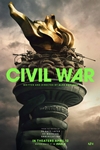
Civil War Released: April 12, 2024 Cast: Kirsten Dunst, Wagner Moura 11.1M
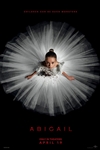
Abigail Released: April 19, 2024 Cast: Melissa Barrera, Dan Stevens 10.2M

Godzilla x Kong: The New Empire Released: March 29, 2024 Cast: Rebecca Hall, Brian Tyree Henry 9.5M
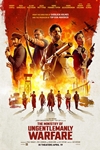
The Ministry of Ungentlemanly Warfare Released: April 19, 2024 Cast: Henry Cavill, Eiza Gonzalez 9M

Spy x Family Code: White Released: April 19, 2024 Cast: Takuya Eguchi, Saori Hayami 4.9M

Kung Fu Panda 4 Released: March 8, 2024 Cast: Jack Black, Viola Davis 4.6M

Ghostbusters: Frozen Empire Released: March 22, 2024 Cast: Paul Rudd, Carrie Coon 4.4M

Dune: Part Two Released: March 1, 2024 Cast: Timothée Chalamet, Rebecca Ferguson 2.9M
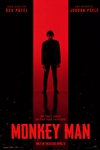
Monkey Man Released: April 5, 2024 Cast: Dev Patel, Sikandar Kher 2.2M
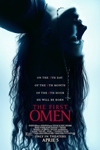
The First Omen Released: April 5, 2024 Cast: Nell Tiger Free, Bill Nighy 1.7M






